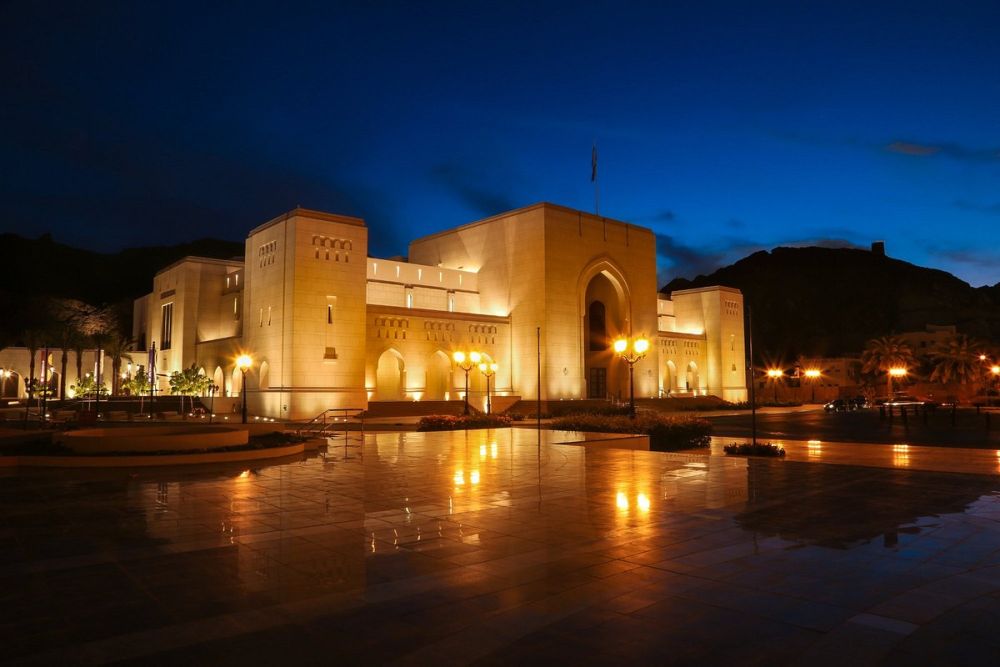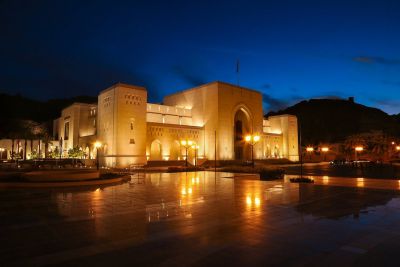

Dive into Oman's rich maritime history at this fascinating exhibition within The National Museum of Oman. As a country with a strategic geographical position and a long coastline extending along the Arabian Sea, Oman's history is deeply interconnected with the sea. Visitors will explore how the maritime trade and shipbuilding contributed to the development of Oman's economy and culture. The exhibit showcases various navigational instruments, maritime crafts, models of Omani ships, and detailed accounts of historic voyages. Additionally, it presents interactive displays and multimedia content to help bring the seafaring tales to life.
This gallery is dedicated to the rich cultural tapestry and the diverse landscapes of Oman. It provides a deep insight into the everyday life of the Omani people, their customs, traditions, and the way the harsh and varied environments have shaped their lifestyle. Artifacts on display range from traditional clothing and jewelry to household items and agricultural tools. Visitors gain knowledge about the developments from prehistoric times to the present day, examining the connection between the land and its people. The gallery uses a combination of real artifacts, reconstructions, and immersive audio-visual installations.
This gallery celebrates the contemporary history of Oman, focusing particularly on the period known as the Omani Renaissance under the leadership of His Majesty Sultan Qaboos bin Said al Said. Since 1970, Oman has experienced a remarkable transformation, and this gallery demonstrates the advancements in education, healthcare, infrastructure, and cultural heritage. Archival photos, documents, and personal accounts provide an understanding of the modernization journey. Importantly, the gallery underscores the balance Oman has struck between embracing modernity and preserving its rich heritage and traditions.
Step back in time to discover Oman's ancient past, from the earliest human settlements to the rise of urban societies. The Prehistory and Ancient History Rooms at the museum feature an exceptional collection of archaeological finds, including stone tools, pottery, and early writing systems. One of the highlights is the display of artifacts from the UNESCO World Heritage site of Bat, Al-Khutm, and Al-Ayn. These comprise some of the most complete collections of settlements and necropolises from the 3rd millennium BC. The accompanying information helps in understanding the significance of these finds.
The Islamic Art Gallery offers a window into the world of Islamic art and craftsmanship from the 7th century onwards. The exhibits here showcase intricately designed textiles, ceramics, woodwork, metalwork, and manuscripts. Notable pieces include beautifully illuminated Qur'ans, hand-crafted astrolabes, and delicately patterned tiles. The artworks, collected from various regions and periods of Islamic history, highlight the stylistic evolution and regional variations that characterize Islamic art. Visitors are encouraged to reflect on the influence of faith on artistic expression in Oman and the wider Muslim world.
Oman's strategic location has made it a key player in international trade routes for centuries, and the 'Oman and the World Gallery' celebrates this history. Through an impressive display of foreign artifacts, gifts exchanged between Omani and foreign leaders, and narratives of diplomatic relations, visitors explore the impact of Oman's interactions with other cultures. Highlights include historic treaties, trade goods such as frankincense and myrrh, and exhibits reflecting Oman's maritime reach to Africa, Asia, and beyond.
Oman's Intangible Heritage Gallery captures the essence of the nation's living traditions, focusing on oral traditions, performing arts, social practices, and festive events. Interactive exhibits and multimedia presentations bring to life the music, dance, and oral storytelling traditions of Oman. Visitors can experience first-hand the sounds and motions that have been passed down through generations. Particularly engaging are the recordings of traditional Omani music and stories that offer a rich audio journey through the country's intangible cultural legacy.
Money talks, and nowhere is this more evident than in the Currency Gallery. Here, visitors trace the history of trade and wealth in Oman through the evolution of currency. From the earliest barter trades to the modern banking systems, the gallery displays ancient coins, banknotes, and official documents related to finance. Interactive screens allow visitors to delve deeper into the stories behind these economic artifacts. Understanding the transformations in currency offers insight into both Oman's economy and its sociopolitical history.
The Costume Gallery provides a colorful and diverse display of traditional Omani dress, reflecting the various regions of the country. Authentic costumes with intricate embroideries and accessories are beautifully showcased, along with interactive screens providing information about the contexts in which these garments are worn. Visitors learn about the significance of textile craftsmanship in Oman's culture and how identity and status are communicated through clothing. Special attention is given to the materials and techniques used in making these garments, linking them to Oman's trade history.
The National Museum of Oman is not just a place to view artifacts but also a center for learning and engagement. Various workshops and educational programs are conducted throughout the year, aimed at different age groups. These include art workshops, lectures on Omani history, and interactive sessions about cultural heritage. Workshops might cover traditional crafts, conservation techniques, or historical research methods, often led by experts or museum curators. The programs aim to deepen visitors' understanding of Oman's history and culture and to inspire future generations.
